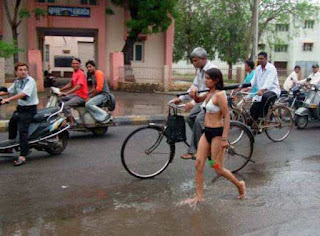From 'Making a Murderer' to 'Evil Genius' (pictured above) – the story behind Netflix's golden age of longform, true-crime docuseries.
From 'Making a Murderer' to 'Evil Genius' (pictured above) – the story behind Netflix's golden age of longform, true-crime docuseries.
THINK BACK TO the 2003 “pizza bomber” incident, and the first thing that comes to mind is probably the
footage of a man sitting handcuffed next to a car, slightly blurry from a camera’s long zoom. He had a device around his neck, and seemed to be getting increasingly agitated. So, for that matter, were the Erie, Pennsylvania, police, who cautiously kept their distance, not yet knowing if it was some kind of hoax. Then the device exploded, and in an instant, 46-year-old pizza deliveryman Brian Wells was dead. That was just the start of a twisted case that would also involve a scavenger hunt, two more corpses, a separate murder-for-hire plot and a deranged woman who may or may not have been pulling the strings.
Twists, turns, a stranger-than-fiction tale of homicides and bizarre human behavior – those are the building blocks for Evil Genius, Netflix‘s four-episode case study of a bank heist that turned into a tabloid home run. And it’s the perfect story for one of the streaming service’s true-crime deep-dives, an increasingly buzzy subgenre that combines the rigor of magazine journalism with the artistic eye of an Errol Morris documentary. Since launching making a Murderer in 2015, Netflix has made the format a cornerstone of its original programming – building up a library that now includes critical and popular successes such as The Keepers and Wild Wild Country. These are not Dateline-style, torn-from-the-headlines recaps. They are nuanced and confident multisided portraits of everything from institutional cover-ups to sex cults, fueled by a desire to understand the stories beneath ugly crimes, no matter how long it takes.It would be disingenuous, of course, to ignore the fact that viewers are attracted to these stories for base-level reasons, too. Evil Genius begins with that shocking, caught-on-camera death, and shows it without warning. Making a Murderer is ultimately about overzealous prosecution and the reality of false confessions – but it starts with gruesome death, sexual assault and the politics of small-town America. Wild Wild Country, about an Indian guru and his followers who attempted to build their own city in Oregon, concerns itself with prejudice and the othering of foreigners. It’s also filled with orgies, drugs, guns, bombs and massive amounts of money – a true-crime bingo card with very few spaces left blank.
And perhaps most important to their success, these docuseries’ chosen subjects are extraordinary. They’re the kinds of cases – often unsolved, frequently morally unresolved – that get people fired up, opinionated, ready to proselytize for the series themselves. To have not watched Making a Murderer in its first few weeks was to be left out of the cultural conversation, despite the show having had little in the way of advance buzz or even marketing. A cynic might assume it had been buried in its release schedule, considering it was launched right before Christmas – a time of year when people not only have less time to watch TV, but also, presumably, less desire to watch something so dark.






Comments
Post a Comment